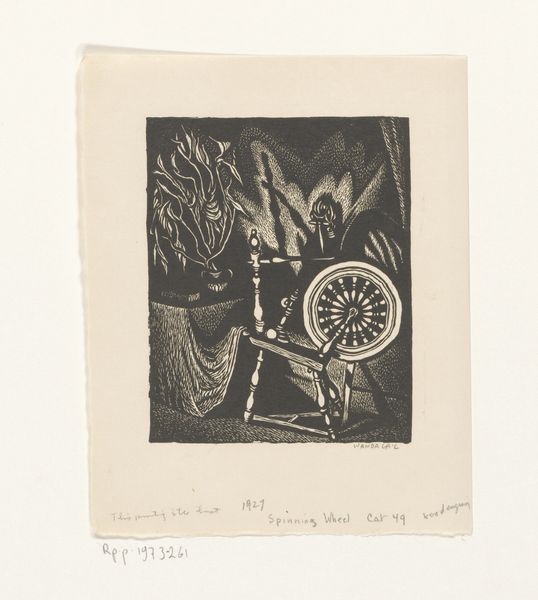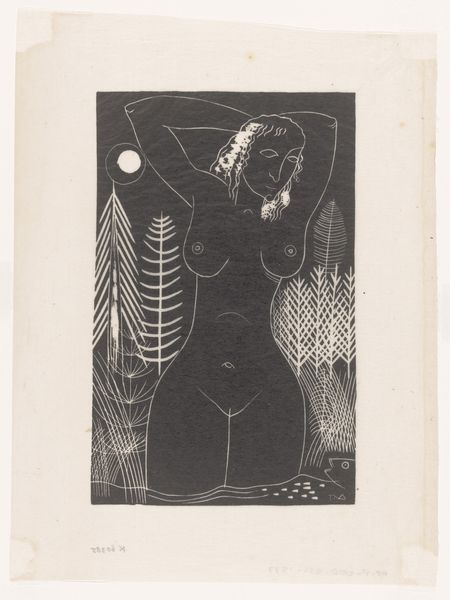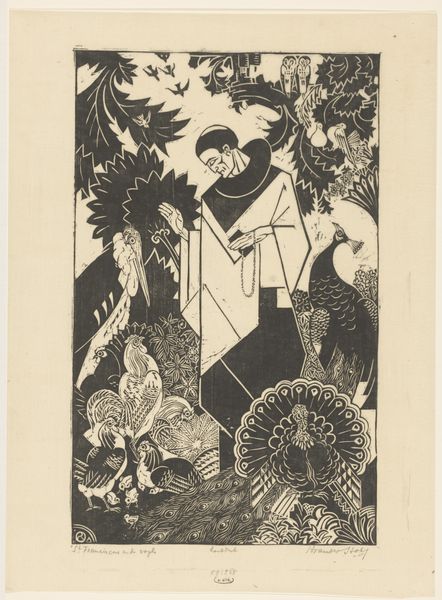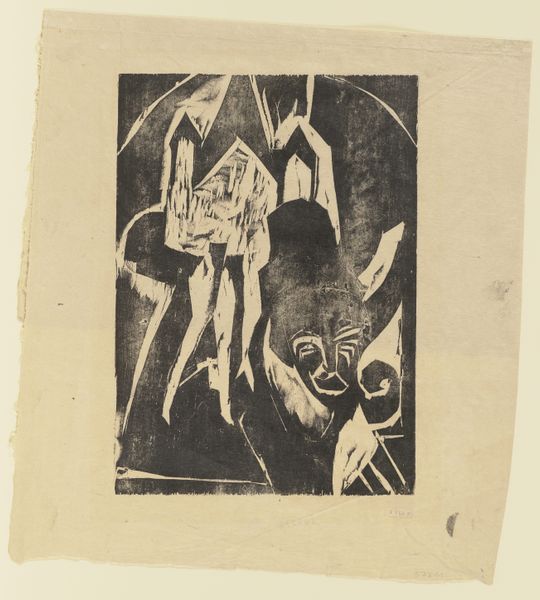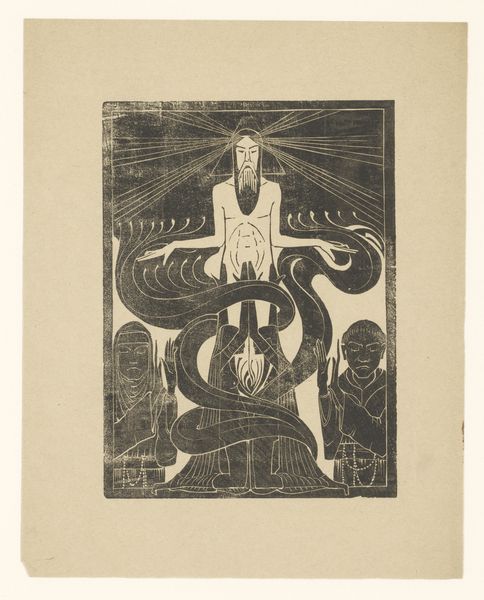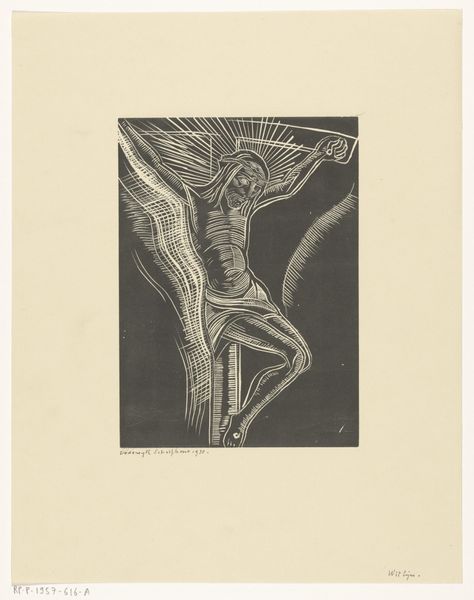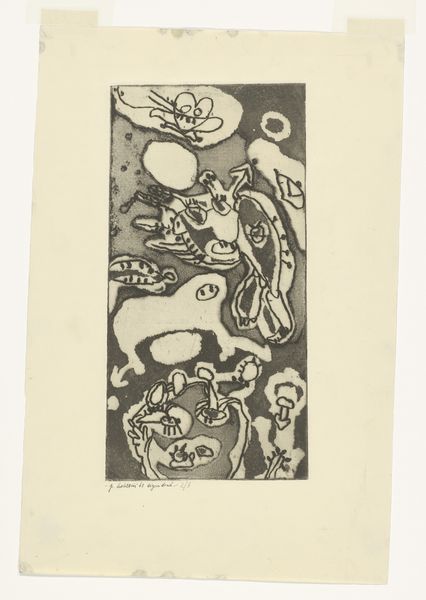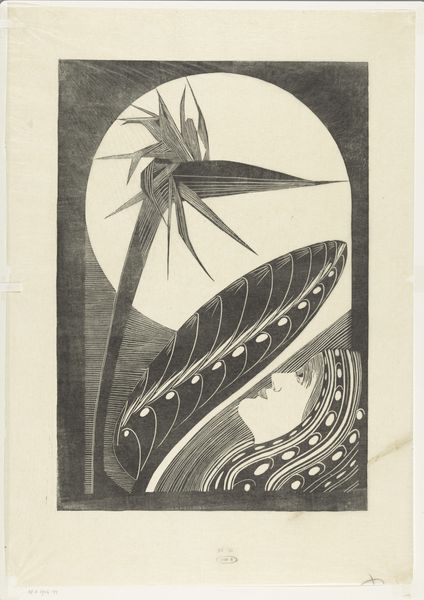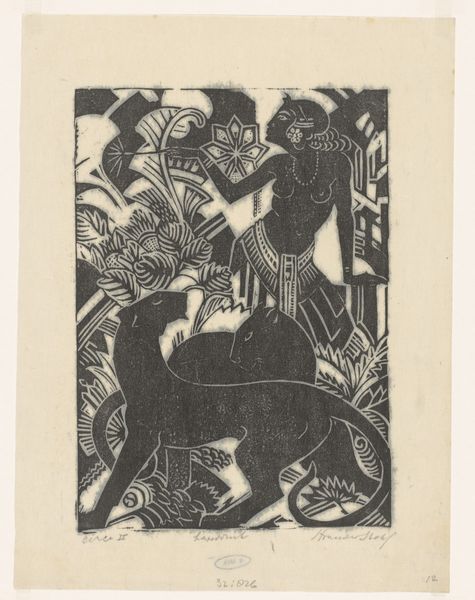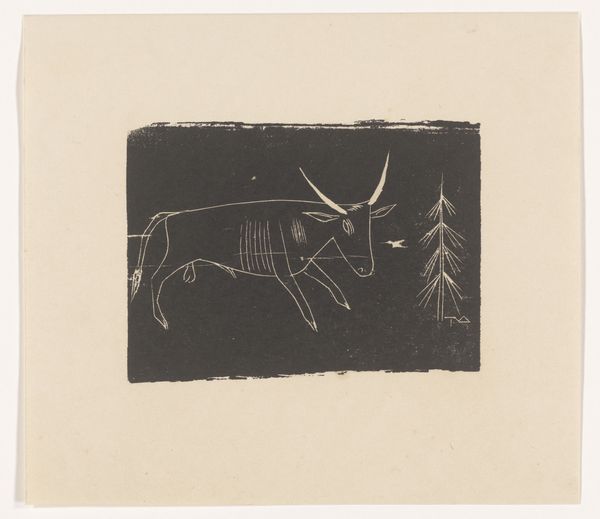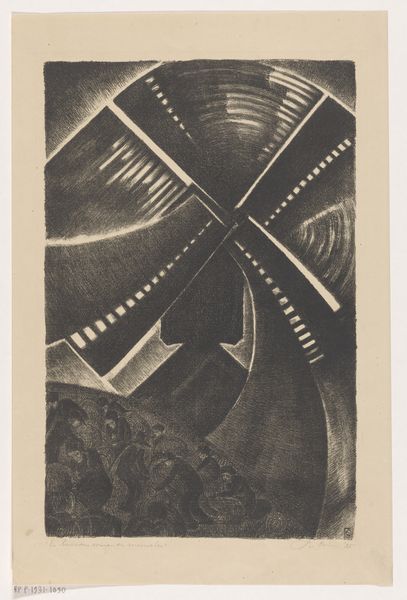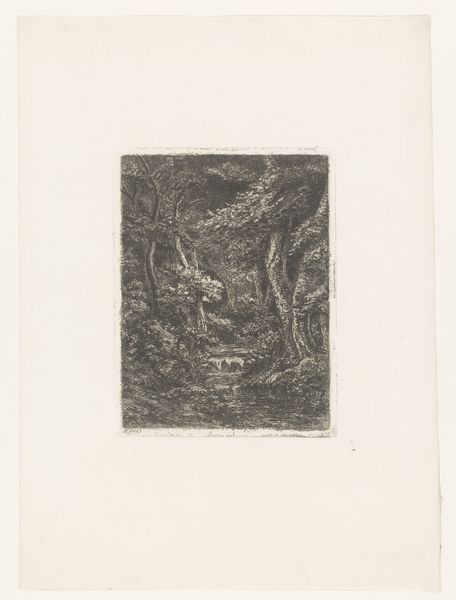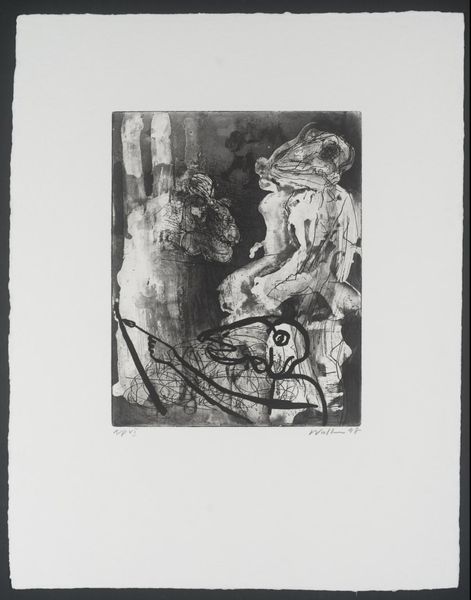
print, linocut, woodcut
# print
#
linocut
#
landscape
#
etching
#
figuration
#
linocut print
#
forest
#
geometric
#
woodcut
Dimensions: height 180 mm, width 148 mm, height 287 mm, width 259 mm
Copyright: Rijks Museum: Open Domain
Curator: Tinus van Doorn's 1937 linocut print, "Bosgezicht met luipaard," is a captivating piece now residing in the Rijksmuseum. Editor: The first thing that strikes me is its dreamlike quality. The stark contrast of black and white creates an almost ethereal atmosphere within this woodland scene. Curator: Indeed. The piece deploys negative space to delineate form, relying on the structural integrity of each block-printed element, from the foliage to the geometric abstraction in the animal's fur. What symbolic reading can you extract from such a stark figuration? Editor: Immediately, the leopard evokes ideas of stealth, power, and maybe even hidden danger lurking beneath the surface of the ordinary, almost Eden-like, landscape. The presence of what could be a sun or moon presiding over the scene seems to reinforce a sense of primal, subconscious energy. It’s quite compelling. Curator: Precisely. Note the linocut technique lends itself to these bold shapes and textures. The artist exploits the medium, flattening the pictorial space, collapsing foreground and background into dynamic relations. It evokes early Modernist interests, an interplay of abstraction with the recognizable. Editor: The choice to render the leopard not as naturally spotted, but rather with this almost skeletal striping is interesting too. I think it underscores its symbolic presence – perhaps hinting at mortality, vulnerability… even while it retains its sense of wild power. This isn't just a jungle cat, it's a representation of inherent existential tensions. Curator: Absolutely. The recurring verticality of the tree trunks, the thin vertical hatches that suggest forest detritus on the ground--these structural elements give rise to an emotional tension when counterpoised with the reclining horizontal figure of the Luipaard itself. Note how the composition leads us into this careful distribution of line and form. Editor: It all converges to something deeply evocative – this isn’t simply an image of nature but a glimpse into a mythic realm where animal instinct meets something…higher. What really makes this image so alive is how Doorn harnesses symbols that trigger this powerful archetypal connection in the viewer. Curator: Van Doorn's handling of positive and negative space achieves just this symbolic purpose and ultimately, foregrounds the material qualities of print-making, revealing the internal formal mechanisms of this striking composition. Editor: An intriguing marriage between symbolic evocation and formal dexterity.
Comments
No comments
Be the first to comment and join the conversation on the ultimate creative platform.
